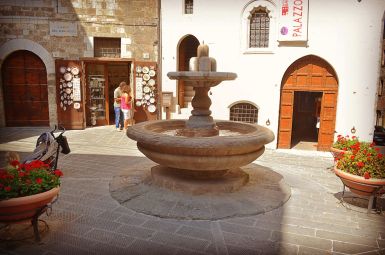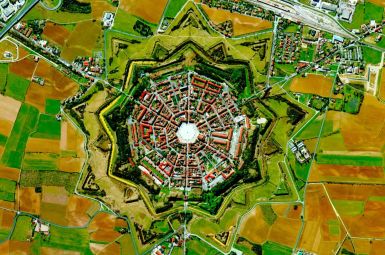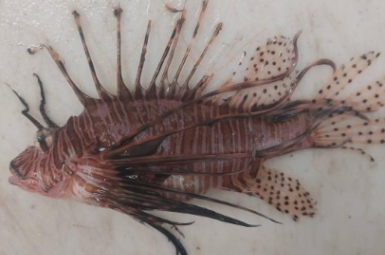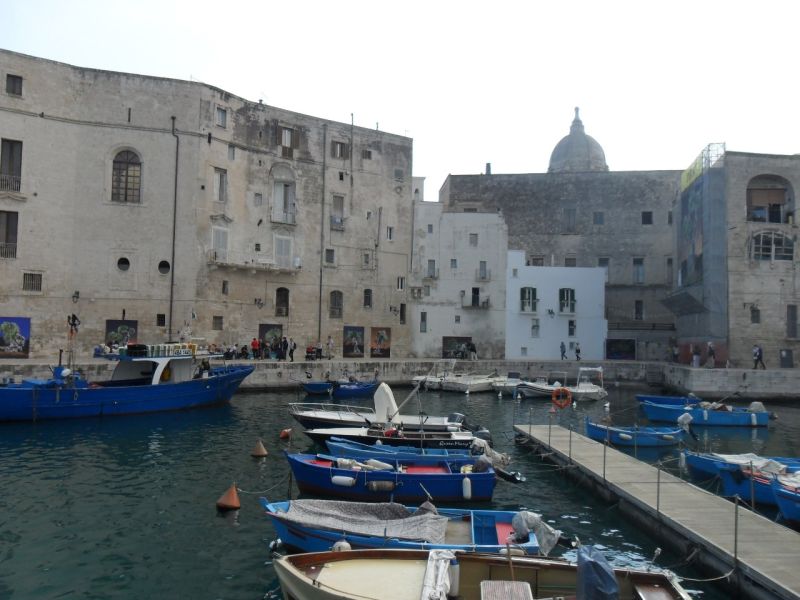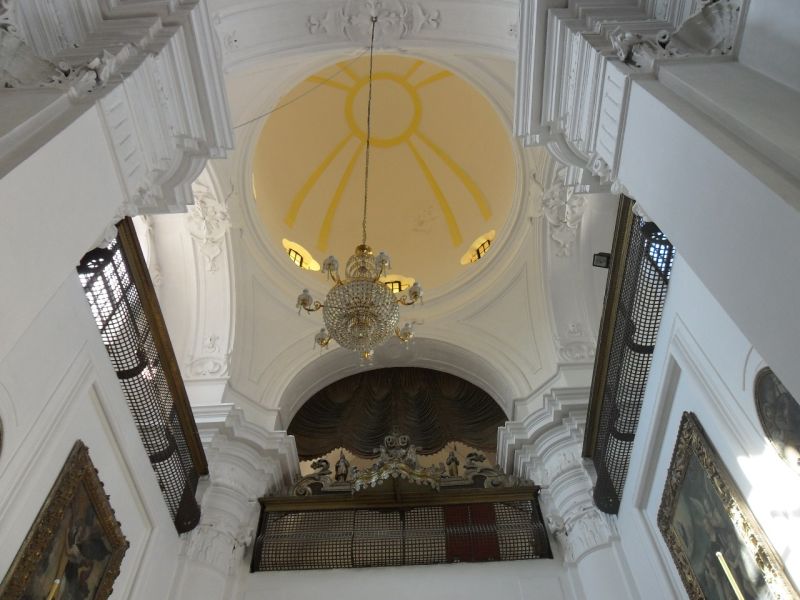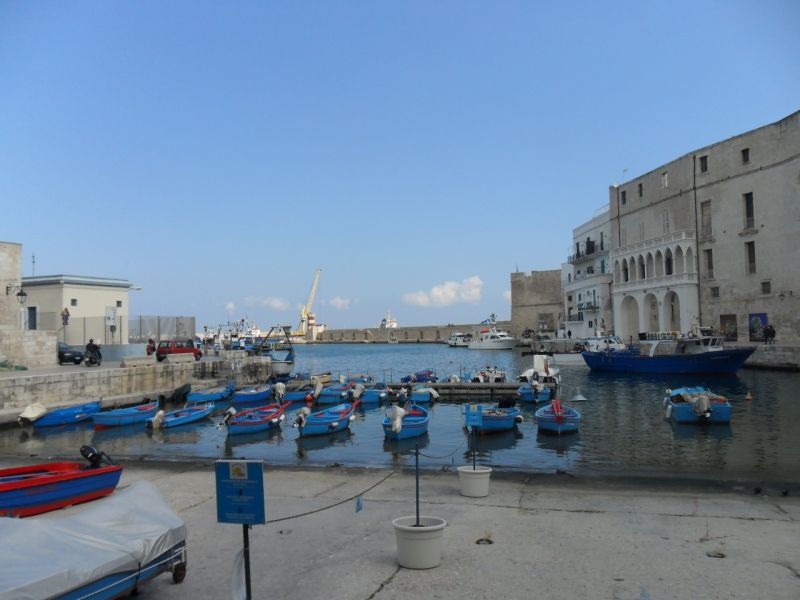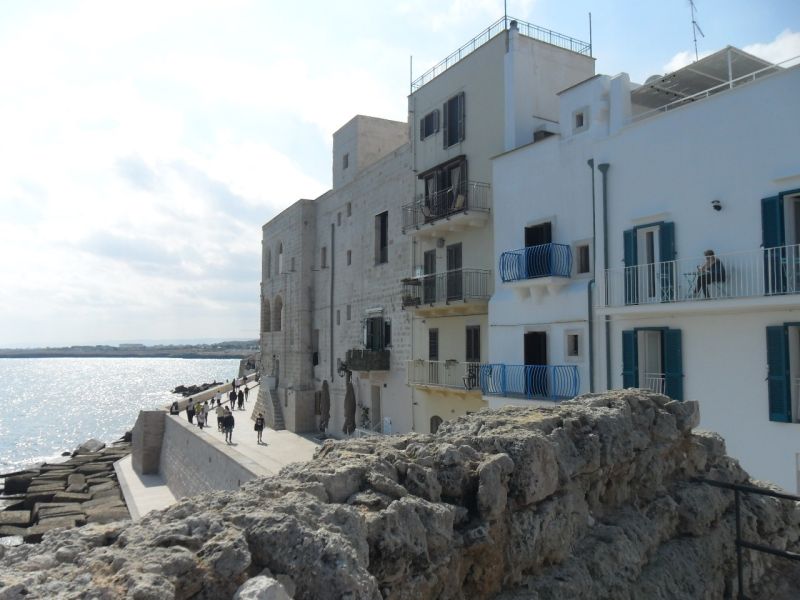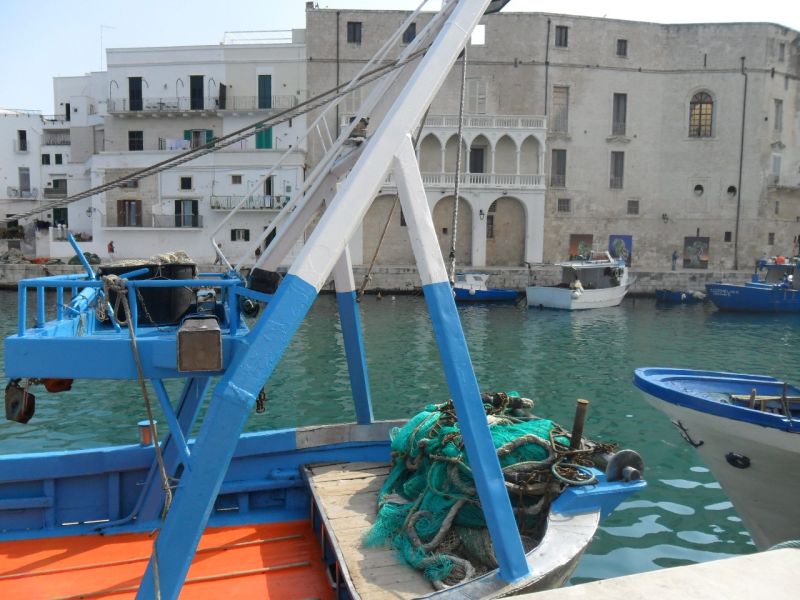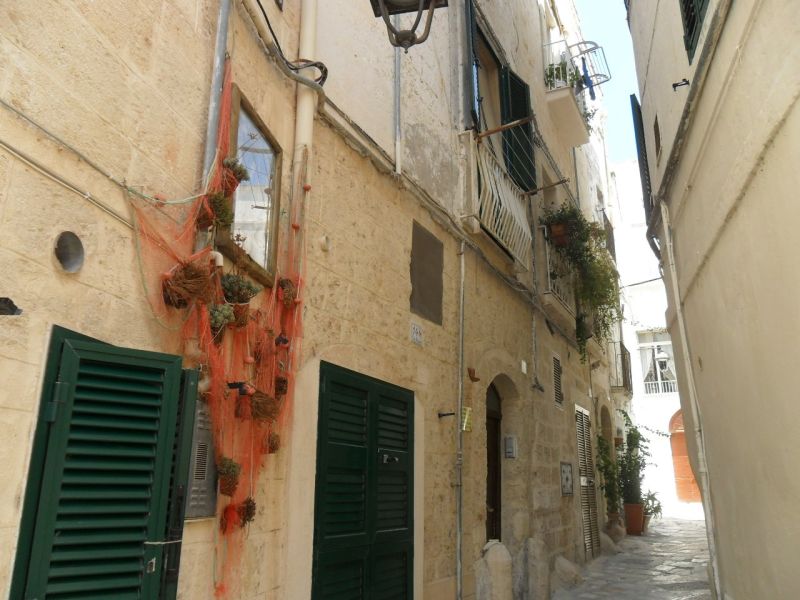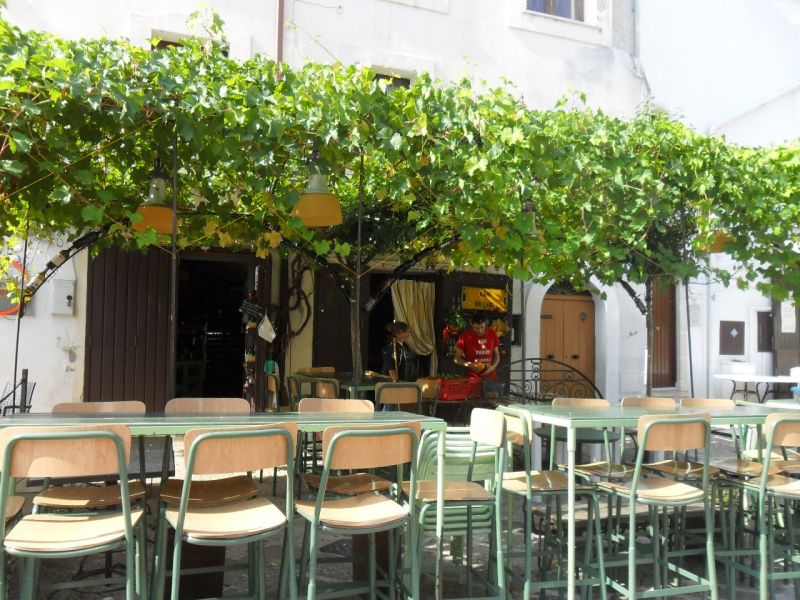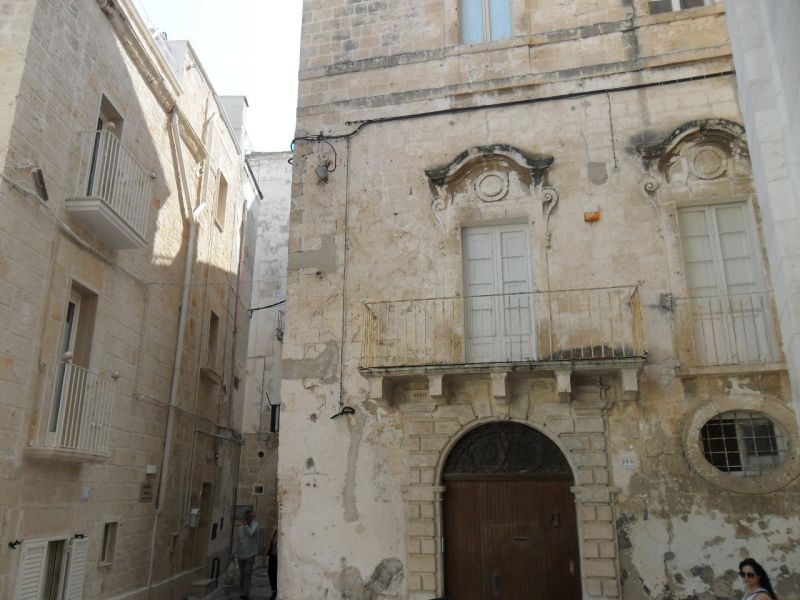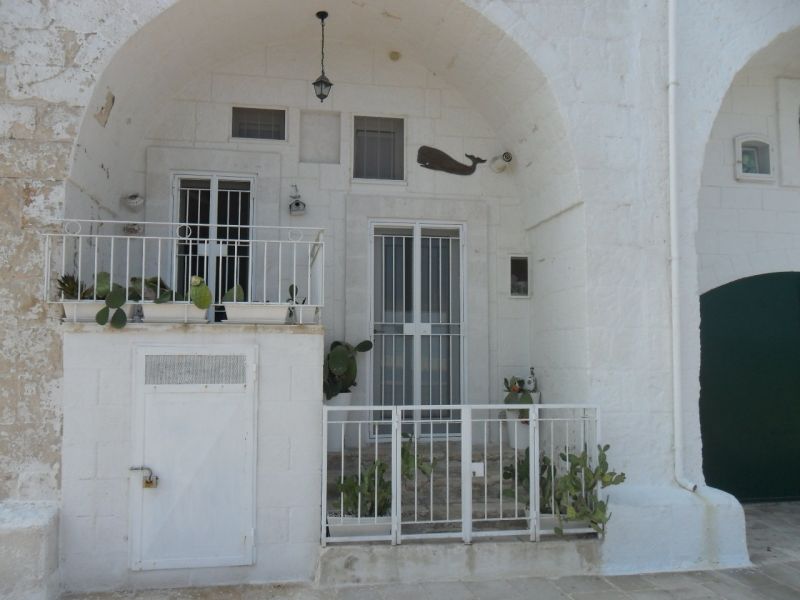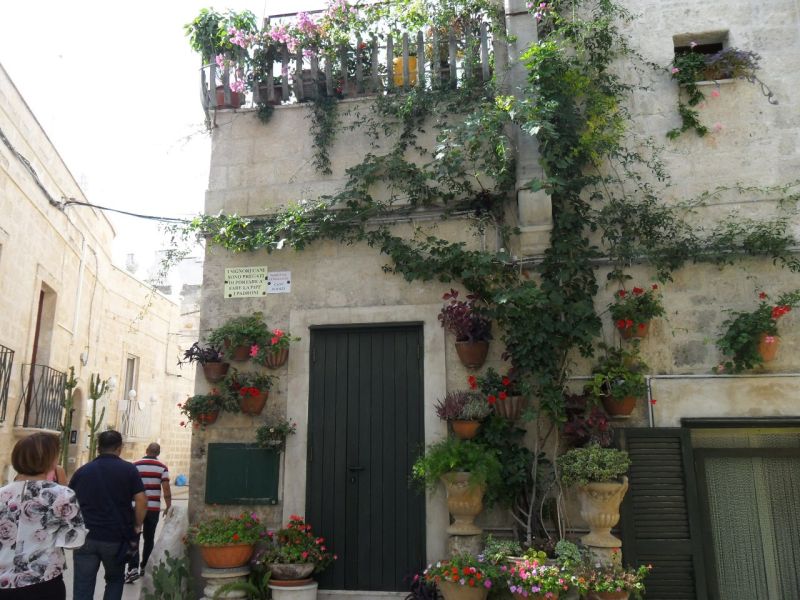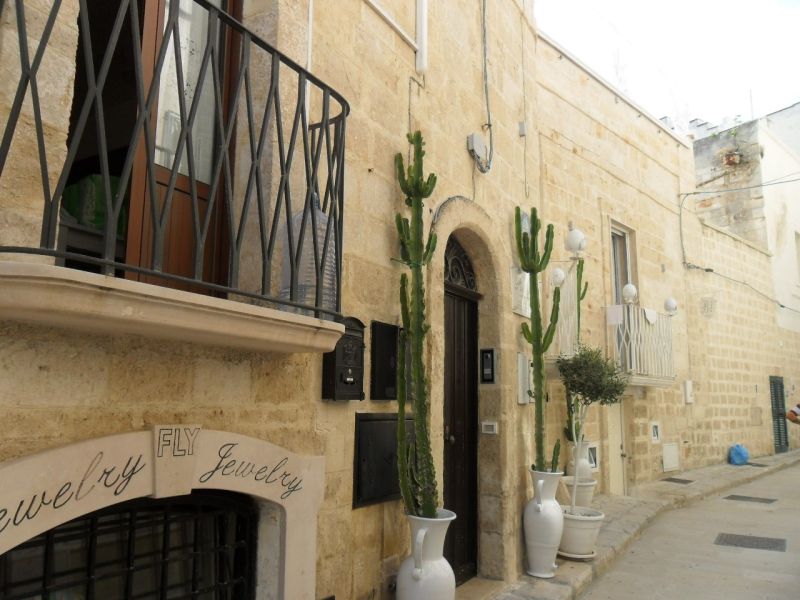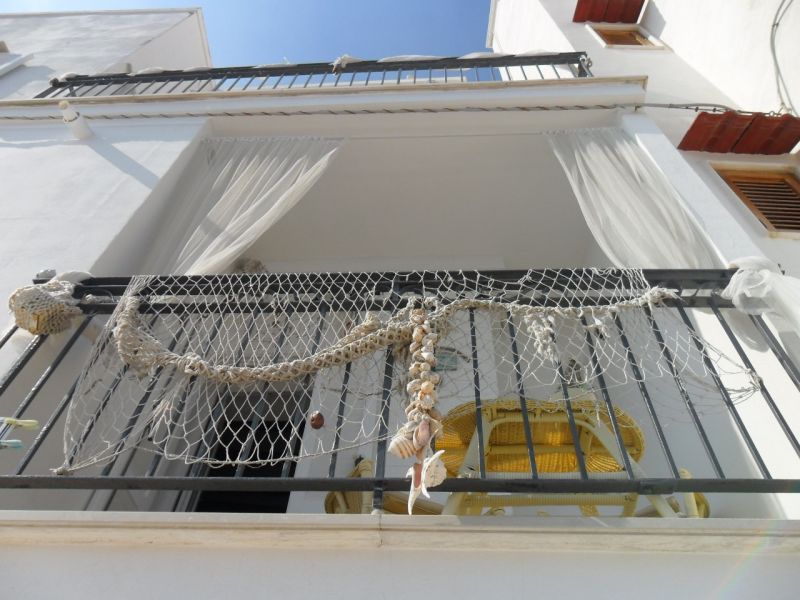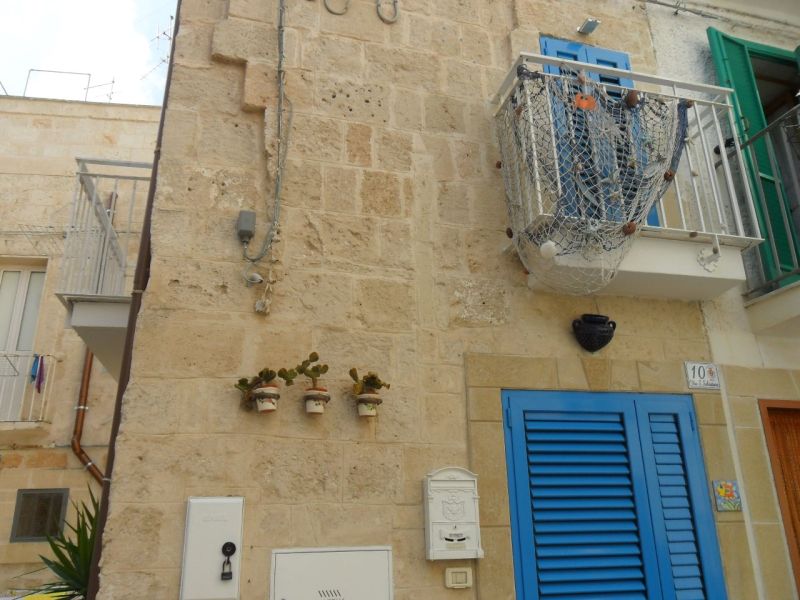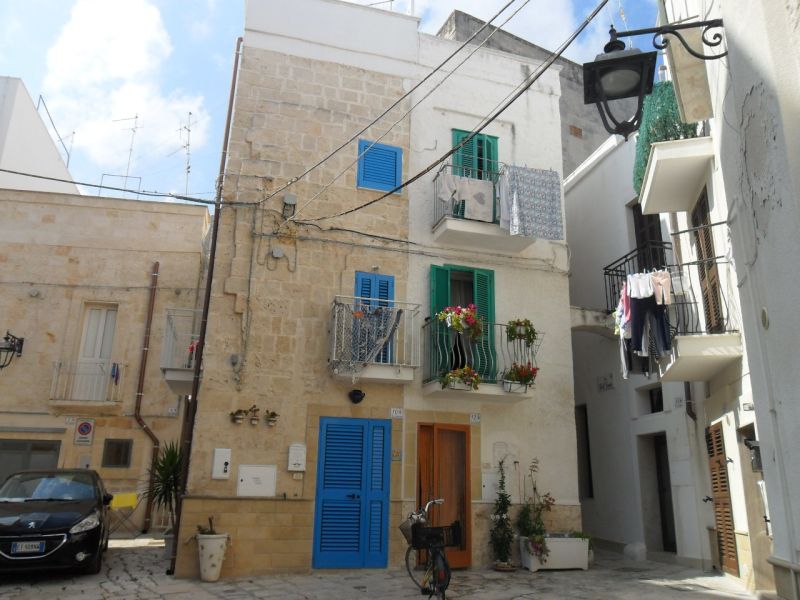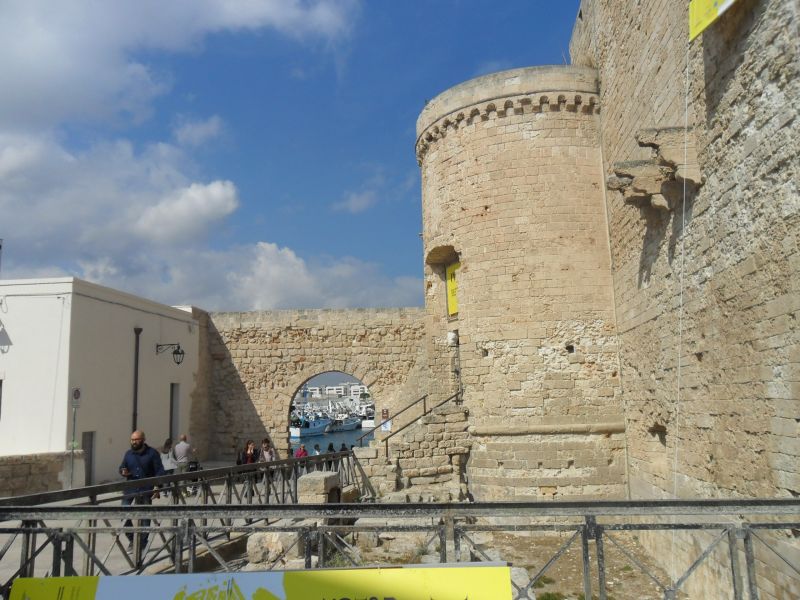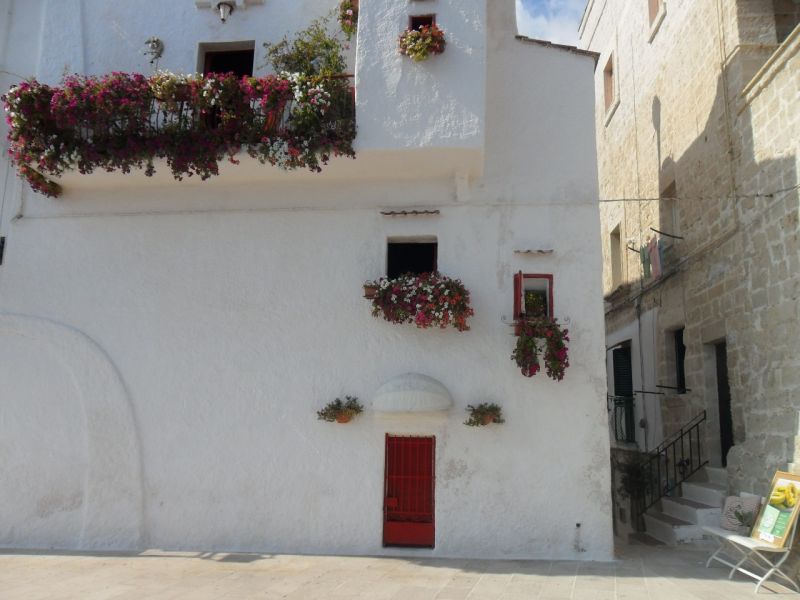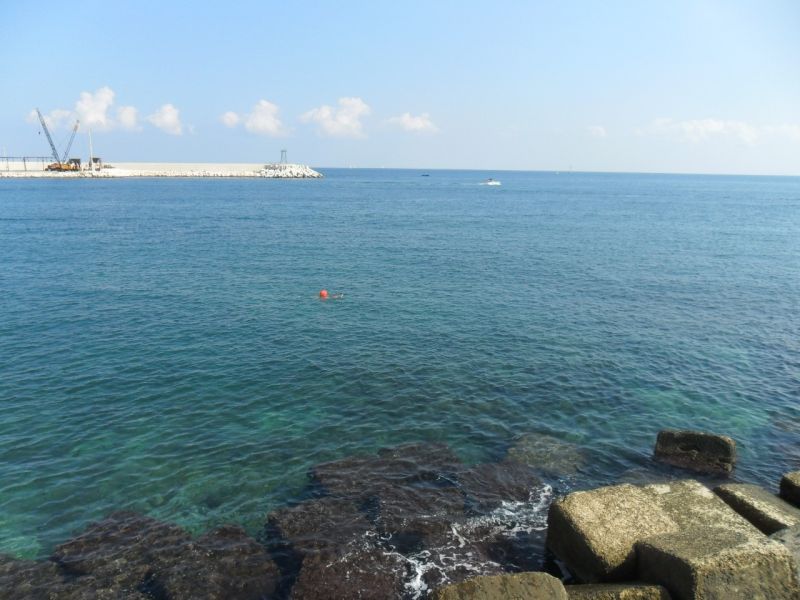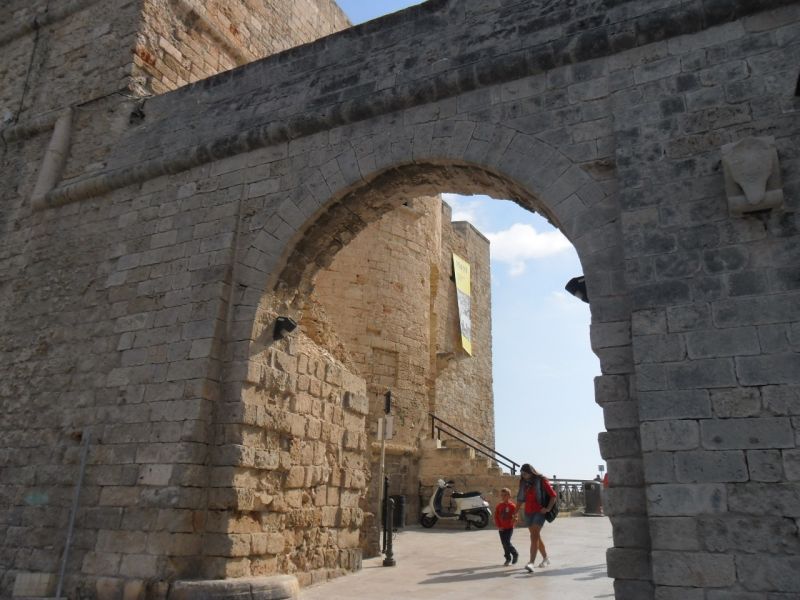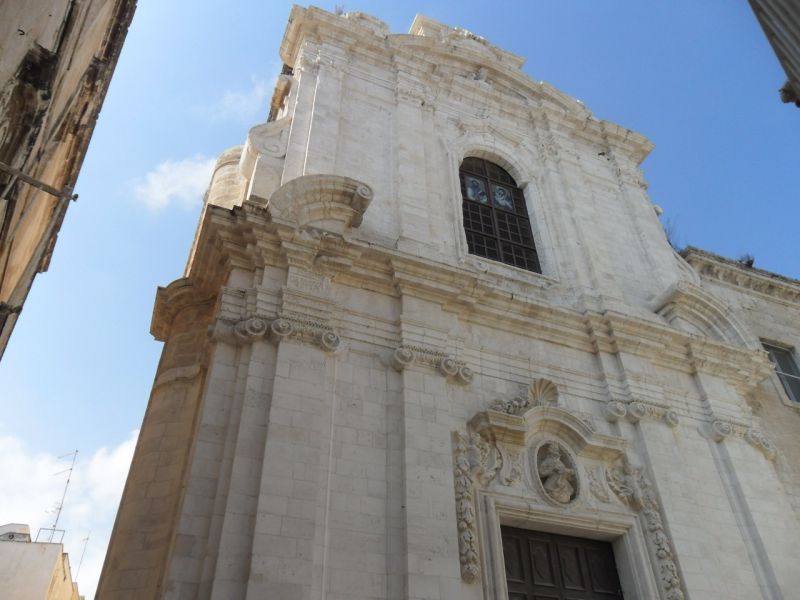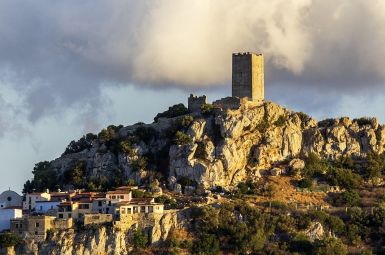
Il Borgo di Monopoli
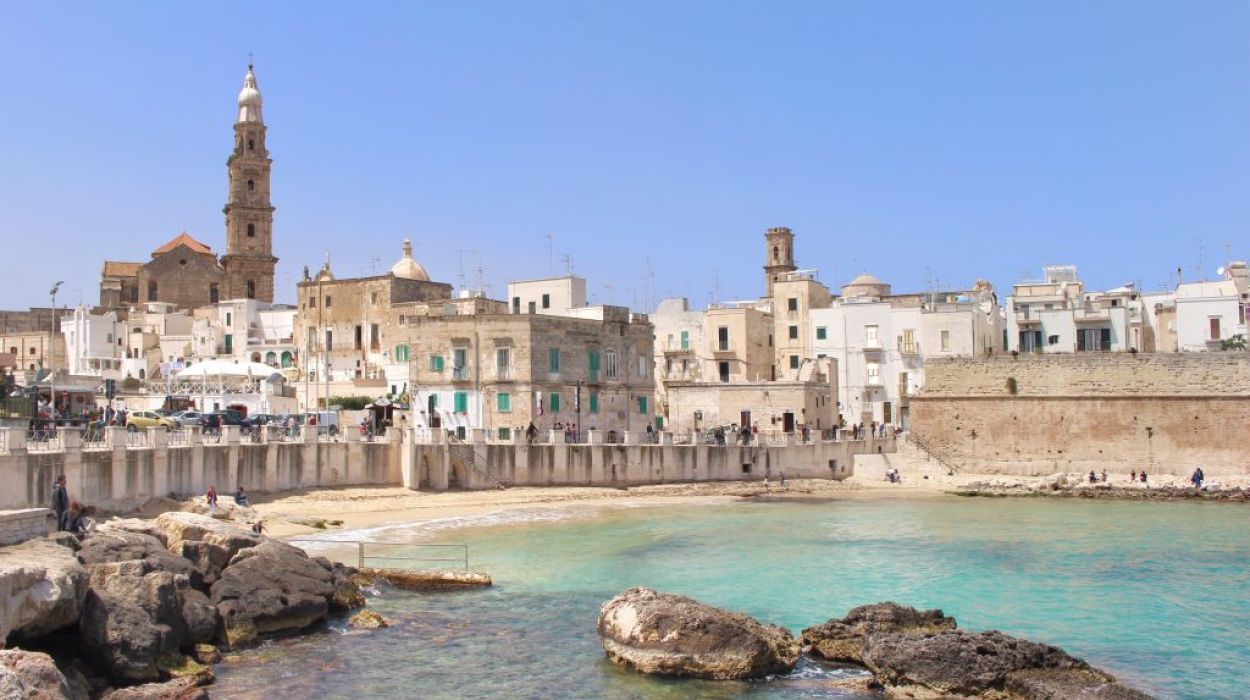
Il Borgo d’Italia
tutto da scoprire ed esplorare
Monumenti
Storia
Grazie alla vicinanza con il mare, Monopoli può vantare origini antichissime. Risale all’età del bronzo il primo villaggio di cui si ha testimonianza, in seguito integrato all’interno di una città messapica, dotata anche di mura difensive. L’arrivo dei romani portò a Monopoli uno sviluppo dei commerci e dell’economia, ed una porta monumentale che si può ammirare ancora oggi, diventata poi parte importante del castello ‘Cinquecentesco.
Come tutte le città del meridione, anche Monopoli ha conosciuto l’avanzata di genti straniere che hanno lasciato tracce importanti del proprio passaggio. La città è l’ultimo porto a Sud della terra di Bari, fin dalle crociate è stato uno degli approdi più importanti del meridione e proprio questo gli ha permesso di crescere durante il Medioevo, portando un arricchimento economico e culturale.
Il continuo mutamento artistico e le incursioni di turchi e veneziani che hanno in parte distrutto la città, sono state però deleterie per le tracce del passato antico, che sono andate quasi perdute.
La grande forza d’animo della città si evince da una piccola e curiosa storia che vede protagoniste le genti umili di questa terra. Nel 1529, il Marchese del Vasto di ritorno dalla Toscana, decise di attaccare Monopoli, senza nessun motivo. La sottopose a pesanti cannoneggiamenti, che sono ancora visibili in una parte di cinta muraria. Tre mesi dopo, gli angioini costrinsero il Marchese a lasciare la città. Nel 1530 il feudo divenne possedimento personale di Carlo V, che decise di rivenderlo ad un Marchese di Messina. A questo punto il popolo, stanco di questi potentati, si autotassa, riuscendo così a raccogliere piccoli tributi grazie ai quali ha potuto riscattare la propria libertà.
Castello di Carlo V
La fortezza angioina di Monopoli è stata costruita sull’estremo lembo di terra che scivola verso il mare. Non è stata una scelta inusuale per la città, infatti già nello stesso luogo in passato vennero costruiti un fortilizio di età aragonese, un’antica torre romana e la chiesetta di San Nicola in Pinna, che è stata interrata per far posto al castello cinquecentesco e che suo malgrado è divenuta la cappella della fortezza.
All’accesso principale del castello successivamente è stata aggiunta una torre rotonda; il torrione destro invece contiene l’incavo per il ponte levatoio.
Il castello ha una pianta pentagonale con torre ai vertici ed è a due livelli. Il primo piano oggi è adibito a mostre e conferenze e si trova allestita la sala delle armi, con i cannoni ancora posizionati al loro posto. Lungo le mura sono state collocate le antiche bocche di fuoco, che invitano a guardare attraverso e a godere di un bellissimo spettacolo paesaggistico.
Quando sono cadute le necessità di difesa, la fortezza è diventata un castello e la sua parte destra è stata adornata da motivi e decorazioni gentilizie. Sotto la loggia del bastione si può ancora vedere lo stemma in pietra del viceré Don Pedro del Toledo, che ha realizzato il castello
La cattedrale di Monopoli
La cattedrale di Monopoli ha una storia suggestiva e affascinate. La cattedrale attuale è stata costruita nel 1742 e ha sostituito la piccola chiesetta medievale, voluta dal vescovo Romualdo e da Roberto d’Altavilla. L’edificio precedente era una piccola basilica a tre navate, con un tetto realizzato con tronchi di legno. Gli arbusti usati per coprire l’interno della chiesa erano Pini d’Aleppo, la leggenda narra che siano giunti nel 1117. Erano una piccola catasta che fungendo da zattera (“madia”) ha portato fino a riva un dipinto della Madonna benedicente con in braccio Gesù Bambino, poi detta “Madonna della Madia”. Quando la piccola chiesa iniziò ad essere insufficiente per accogliere tutti i fedeli si decise di ricostruire totalmente il luogo di culto. I lavori iniziarono nel 1741 e terminarono nel 1772. La nuova cattedrale è stata realizzata in stile barocco ed il uando QQ dipinto è ancora oggi custodito al suo interno. La cattedrale di Monopoli è senza dubbio uno degli edifici di culto più belli della regione, sia per il prospetto esterno, ma anche per il fastoso interno ricco di marmi policromi.
Nel museo diocesano, istituito nel 2002, sono presenti numerose repliche dell’icona della Madonna della Madia. Ma è conservata anche un’importante collezione di tele d’arte rinascimentale veneta, con opere che vanno da Iacopo Palma il giovane a Francesco Vecellio, fratello di Tiziano.
La chiesetta di Santa Maria degli Amalfitani
La chiesetta di Santa Maria degli Amalfitani è un luogo raccolto ma carico di un intensa suggestione, soprattutto negli ambienti ipogei che rimandano ad un passato arcaico e rustico.
Questo piccolo luogo è un ex voto, di un gruppo di marinai che scampato alle furie di una tempesta giunse nel porto di Monopoli e si fermarono a pregare nella cripta, luogo di culto allestito già in precedenza dai monaci basiliani. In realtà, scavando un po’ tra la storia, la chiesa racconta vicende che legano Monopoli ad Amalfi: infatti la nave partita dalla Campania non si trovava casualmente nelle acque pugliesi. In un tempo di supremazie marinare, Venezia decise di escludere Amalfi dai commerci verso l’oriente e alcuni abitanti di questa città, per sopperire alla mancanza, decisero di trasferirsi in questa zona della Puglia. Per questo anche Monopoli ospitava una piccola comunità fuori dalle sue mura.
L’impianto originario era costituito semplicemente da una cripta su cui successivamente, è stata costruita una piccola chiesa, voluta dai naufraghi amalfitani. Il rimaneggiamento del 1932 ha lasciato solo una parte della decorazione scultorea originale.
La chiesa degli Amalfitani oggi è un luogo scelto per cerimonie intime e di tanto in tanto apre le porte a concerti di musica classica e piccole mostre.
Curiosità
Campagne, chiesette e “La lama degli ulivi”
Nella distesa di verde e bianco della Valle d’Itria si trovano piccole testimoni di un passato antico fatto di misticismo e religione, impastato all’animo umile dei contadini. Sono piccole chiesette che resistono alla corsa verso la modernità e trascinano lungo suggestioni e credenze popolari.
La chiesetta di San Michele in Fragesto è stata costruita con l’arrivo delle suore benedettine,
il suo interno a tre navate con cupole in asse è un assetto noto in altre chiese del territorio. Le cupole sono state inglobate nell’interno, ma in origine erano visibili anche esternamente.
In contrada Assunta si trova una chiesetta semplice eppure carica di profondo significato. Nella pianta quadrata e lineare del suo interno si trovano affreschi che rimandano alle imprese dei crociati e in una nicchia è stato dipinto San Giorgio a cavallo.
La grotta di San Leonardo si trova nascosta dalla chiesa omonima, che prende il nome appunto dall’ipogeo sottostante. La cripta è a navata unica e di forma irregolare, una leggenda racconta che in questo luogo abbia predicato persino San Pietro.
Una parentesi a parte la merita la “Lama degli Ulivi”, non una chiesa ma un piccolo parco che si estende per circa tre ettari. Lama in dialetto pugliese è il solco di un fiume antichissimo che non esiste più ma che ha lasciato nel terreno il segno del suo passaggio. Addentrandosi lungo questo percorso si entra in stanze dove sono stati ricreati scorci di paesaggi, non solo degli alberi custodi della Puglia, ma anche cascate e laghi. I millenari ulivi sono signori della terra che come monumenti ne rispecchiano l’identità e la storia. All’interno di questo percorso si trovano due piccole chiesette rupestri medievali, quella di Iacovello e quella di Santa Cecilia, ricche di affreschi e bellissimi dipinti. Basta spostare un po’ il velo di questo parco per scoprire che in realtà nasconde un bellissimo intento: grazie al contributo che viene dato per visitare la Lama degli Ulivi, si partecipa al progetto per restaurare e custodire queste due bellissime chiese medievali.
Personaggi
Luca Leggiero
Nato a Monopoli l’undici novembre del 1984. Ha esordito nel calcio come giocatore del Monopoli, ma successivamente ha scelto di dedicarsi alla disciplina del calcio a 5. Ha giocato con la maglia del Virtus Monopoli e nel 2011 è stato convocato in nazionale. Nel 2014 insieme alla sua squadra si laurea campione d’Europa, battendo la nazionale russa.
Antonio Muolo
È nato a Monopoli nel 1950, è stato un militare della Repubblica Italiana. Insignito della medaglia al valor civile alla memoria per aver salvato a Fiumicino due bagnanti in pericolo, non esitando a tuffarsi nuovamente per salvare il terzo. Questo terzo tuffo nelle acque in tempesta purtroppo gli è stato fatale.
